Script Writing for Movies and Television
A course by Julio Rojas , Screenwriter and Author

Discover a creative method to start telling your audiovisual stories
There are a million and one ways to tell a story and every scriptwriter has his or her own unique technique for doing so. Julio Rojas—the 2012 Goya Award-winning scriptwriter and author—has developed a method he calls the "Script Folder," designed to help you tell a story and tackle the seemingly complex and daunting world of scriptwriting.
Learn techniques, tools, and tricks to turn that story idea in your head into an organic and coherent narrative system, ready to progress to the writing phase.
What will you learn in this online course?
28 lessons & 34 downloads
- 99% positive reviews (1.3K)
- 40,526 students
- 28 lessons (4h 59m)
- 34 additional resources (10 files)
- Online and at your own pace
- Available on the app
- Audio: Spanish, German, English, French, Italian, Dutch, Polish, Portuguese, Turkish
- Spanish · English · Portuguese · German · French · Italian · Polish · Dutch · Turkish
- Level: Beginner
- Unlimited access forever
What is this course's project?
Create a script folder with all the necessary elements for writing a fiction audiovisual project.
Projects by course students
Who is this online course for?
Any storyteller who's not specialized in script writing, as well as creatives, video game designers, and anyone who wants to tell a story like a professional.
Requirements and materials
No previous experience is necessary, just a notebook, a computer with a word processor, and a free Workflowy account.

Reviews

Julio Rojas
A course by Julio Rojas
Julio Rojas is a dentist by trade, which may be hard to believe given that he has devoted over two decades of his life to screenplays and writing. He has worked as a professor at major universities and film schools like the EICTV in Cuba, where he's been teaching the advanced screenwriting course for fifteen years. Julio has also worked as a fiction content director for free-to-air TV channels and audiovisual producers.
His most prominent work includes feature films like Sábado(Rainer Werner Fassbinder Award), La vida de los peces (2012 Goya winner), and La memoria del agua (selected for Venice Days at the 2016 Venice Film Festival). In addition to screenplays, Julio just published his first novel, a historical crime thriller titled El visitante extranjero (The Foreign Visitor), through Penguin Random House.
His Spotify podcast series CASO 32, listed by The New York Times as one of the best audio fictions of 2020, has been remade in various languages as well as categorized as the most-listened-to Spanish-language audio fiction in the world.
Content
-
U1
Introduction
-
Presentation
-
Influences
-
What we will do in this course: Script folder
-
-
U2
Introduction to the stories
-
Choosing what to tell
-
The types of stories
-
The base argument
-
-
U3
Story design
-
Narrator and point of view
-
The great drawing
-
-
U4
The elements of the script
-
The script as a system
-
Physical universe
-
Narrative objects
-
The Character I
-
The Character II
-
The broken arrow: Vectors
-
-
U5
Most used narrative devices
-
Narrative devices
-
Time alteration
-
Time trial and anecdote
-
Harmonic dissociation
-
-
U6
Telling your story
-
Narrative units
-
The scene and its structure
-
The sequence and its structure
-
Combining narrative units
-
-
U7
Presenting your story
-
Plot formats
-
Logline, storyline and synopsis
-
The scale and the treatment
-
-
U8
Script writing
-
The script format
-
Writing tools
-
Managing the script folder
-
-
FP
Final project
-
Script Writing for Movies and Television
-
What to expect from a Domestika course
-
Learn at your own pace
Enjoy learning from home without a set schedule and with an easy-to-follow method. You set your own pace.
-
Learn from the best professionals
Learn valuable methods and techniques explained by top experts in the creative sector.
-
Meet expert teachers
Each expert teaches what they do best, with clear guidelines, true passion, and professional insight in every lesson.
-
Certificates
PlusIf you're a Plus member, get a custom certificate signed by your teacher for every course. Share it on your portfolio, social media, or wherever you like.
-
Get front-row seats
Videos of the highest quality, so you don't miss a single detail. With unlimited access, you can watch them as many times as you need to perfect your technique.
-
Share knowledge and ideas
Ask questions, request feedback, or offer solutions. Share your learning experience with other students in the community who are as passionate about creativity as you are.
-
Connect with a global creative community
The community is home to millions of people from around the world who are curious and passionate about exploring and expressing their creativity.
-
Watch professionally produced courses
Domestika curates its teacher roster and produces every course in-house to ensure a high-quality online learning experience.
FAQs
What are Domestika's online courses?
Domestika courses are online classes that allow you to learn new skills and create incredible projects. All our courses include the opportunity to share your work with other students and/or teachers, creating an active learning community. We offer different formats:
Original Courses: Complete classes that combine videos, texts, and educational materials to complete a specific project from start to finish.
Basics Courses: Specialized training where you master specific software tools step by step.
Specialization Courses: Learning paths with various expert teachers on the same topic, perfect for becoming a specialist by learning from different approaches.
Guided Courses: Practical experiences ideal for directly acquiring specific skills.
Intensive Courses (Deep Dives): New creative processes based on artificial intelligence tools in an accessible format for in-depth and dynamic understanding.
When do the courses start and when do they finish?
All courses are 100% online, so once they're published, courses start and finish whenever you want. You set the pace of the class. You can go back to review what interests you most and skip what you already know, ask questions, answer questions, share your projects, and more.
What do Domestika's courses include?
The courses are divided into different units. Each one includes lessons, informational text, tasks, and practice exercises to help you carry out your project step by step, with additional complementary resources and downloads. You'll also have access to an exclusive forum where you can interact with the teacher and with other students, as well as share your work and your course project, creating a community around the course.
Have you been given a course?
You can redeem the course you received by accessing the redeeming page and entering your gift code.



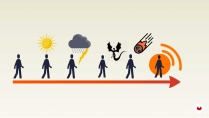

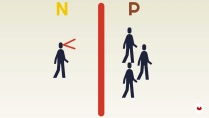
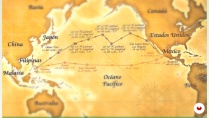
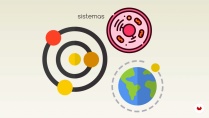
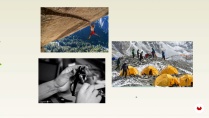





Muy completo y muy didáctico. Una forma magnífica de introducirte en la escritura de guiones paso a paso. Me ha gustado mucho y lo recomendaría. Me gustaría que publicaseis un curso sobre guion técnico ;)
Excelente. Bien didáctico e intuitivo.
This is a very structured course !!
Muy bueno
Super Recomendado. La estructura lo fascilta todo.